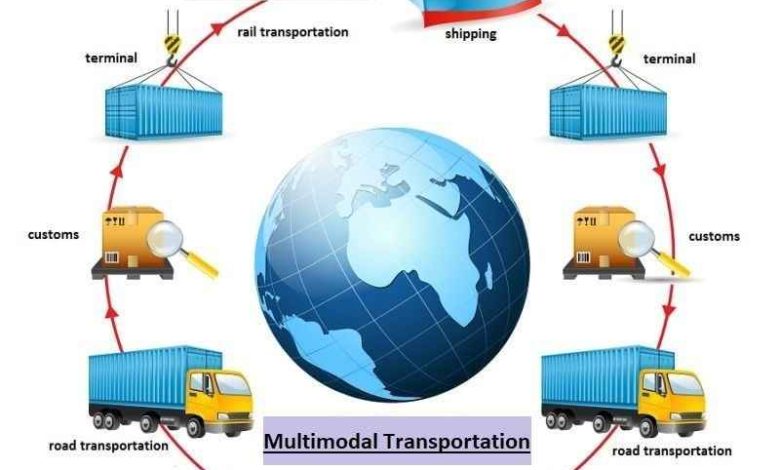Multimodal Transportation Solutions for Supply Chain Efficiency

In today’s fast-paced global marketplace, supply chain efficiency is more critical than ever. Companies need to deliver products quickly and reliably while managing costs effectively. One of the most effective ways to achieve this is through multimodal transportation solutions that leverage different modes of transport, such as road, rail, air, and sea. This blog explores how multimodal transportation enhances supply chain efficiency, the role of technology in streamlining processes, and how pursuing an MBA in supply chain management and logistics can provide the skills necessary to thrive in this vibrant field.
Understanding Multimodal Transportation
Multimodal transportation refers to the use of two or more different transport modes to move goods from the point of origin to the final destination. It is a vital aspect of modern logistics, allowing for a flexible approach to meet varying customer demands while optimizing costs. For instance, companies might combine trucking for the first leg of delivery with rail for long-distance travel, followed by air freight for rapid delivery to final customers.
The integration of these various modes requires sophisticated planning and coordination, as well as a deep understanding of logistics principles. Companies that excel in this area can benefit from reduced transit times, lower shipping costs, and improved service levels, ultimately enhancing customer satisfaction.
The Benefits of Multimodal Solutions
One of the primary advantages of multimodal transportation is its ability to provide flexibility. Companies can choose the most efficient transport modes depending on the needs of their products and customers. For example, perishable goods may require air transport to reach their destination quickly, while bulk materials might be cost-effectively transported by rail.
Moreover, combining various modes of transportation can also lead to significant cost savings. By optimally selecting routes and modes, businesses can minimize both fuel costs and logistics expenses. In fact, according to a report by the International Transport Forum, multimodal solutions can reduce transport costs by up to 20% overall when optimally implemented.
The Role of Technology
The landscape of supply chain management is rapidly evolving, largely due to technological advancements. Technologies such as the Internet of Things (IoT), data analytics, and artificial intelligence (AI) play a crucial role in enhancing the efficiency of multimodal transportation.
IoT devices can provide real-time tracking of shipments, allowing companies to monitor their deliveries from start to end. This level of visibility enables businesses to make informed decisions and promptly address any disruptions or delays. Additionally, data analytics can help optimize routes and streamline operations by predicting transit times and identifying the most cost-effective modes of transport.
Blockchain supply chain management also offers transformative potential in this area. By ensuring transparency and security in transactions, blockchain can facilitate smoother communication between all parties involved in the supply chain.
Educational Pathways to Success
As the supply chain sector continues to grow and evolve, the demand for skilled professionals is on the rise. Pursuing an MBA in supply chain management and logistics offers a comprehensive education that covers essential aspects of logistics, strategy, and operations management. The program typically includes courses on transportation management, logistics planning, and supply chain analytics, all of which are crucial for managing multimodal transportation solutions effectively.
Graduates are equipped with the strategic and analytical skills necessary to address complex logistics challenges. They also gain exposure to the latest technologies and trends shaping the industry, preparing them for a successful career in supply chain management.
Real-World Applications
Many organizations are already reaping the benefits of adopting multimodal transportation strategies. Consider the case of a global consumer goods company that shifted its shipping operations from primarily relying on a single mode to a multimodal strategy. By integrating rail for long-haul transport and trucking for last-mile delivery, the company noted a 15% reduction in logistics costs and improved delivery times.
Additionally, companies like Amazon are pioneers in multimodal logistics, utilizing a combination of air, sea, and road transport to meet customer demands. Their ability to offer rapid deliveries while maintaining an efficient supply chain is a testament to the success of multimodal solutions in practice.
Key Challenges to Consider
While the benefits of multimodal transportation solutions are substantial, businesses must also navigate a variety of challenges. Coordination between different carriers can be complicated, requiring effective communication and partnership management. Compliance with various regulations, especially across international borders, can also pose hurdles that companies must address.
Moreover, implementing advanced technologies can involve significant upfront costs and a steep learning curve. However, organizations that take the time to invest in training and integrating these technologies will likely find the long-term efficiencies and cost savings more than justify the initial expenditure.
Conclusion
In conclusion, multimodal transportation solutions serve as a powerful strategy for enhancing supply chain efficiency. By leveraging various modes of transport, businesses can achieve cost savings, greater flexibility, and improved customer satisfaction. With the advent of technology, especially in areas like blockchain supply chain management, the landscape of logistics is transforming at an unprecedented pace.
For individuals aspiring to make a mark in this dynamic sector, pursuing an MBA in supply chain management and logistics is a strategic move. Not only does it provide essential skills and knowledge, but it also equips professionals to navigate the complexities of multinational logistics. With the right education, along with an understanding of emerging technologies and strategic thinking, the possibilities for career advancement are limitless. As the industry continues to evolve, embracing multimodal transportation solutions will be key to maintaining a competitive edge in the global marketplace.
So, if you’re ready to elevate your career and make impactful changes in the world of supply chain, consider exploring your educational options, such as this MBA in Supply Chain Management, to equip yourself with the tools needed for success.
FAQs
Q1: What is multimodal transportation?
Multimodal transportation refers to the use of two or more different modes of transport to move goods from origin to destination. This strategy optimizes logistics by taking advantage of the strengths of each mode, such as cost-effectiveness, speed, and reliability.
Q2: How does technology improve multimodal transportation?
Technology enhances multimodal transportation by providing real-time tracking, optimizing routes through data analytics, and ensuring transparency and security with blockchain. These tools enable businesses to make informed decisions and respond swiftly to any disruptions or delays.
Q3: What educational qualifications are needed for a career in supply chain management?
While various educational pathways exist, pursuing an MBA in supply chain management is highly beneficial. This program offers comprehensive training in logistics, strategy, and operations management, equipping graduates with the skills required for complex supply chain challenges.
Q4: What are some common challenges of multimodal transportation?
Key challenges include coordination between different carriers, compliance with varying regulations, and the upfront costs associated with implementing advanced technologies. However, investing in training and integration can yield long-term benefits that outweigh these initial hurdles.
Q5: Can small businesses benefit from multimodal transportation?
Yes, small businesses can also leverage multimodal transportation to enhance efficiency and reduce logistics costs. By carefully selecting routes and modes that suit their needs, smaller companies can compete effectively in the market while maintaining flexibility and customer satisfaction.
Read another article ”What Are the Benefits of Hiring an SEO Agency?”



